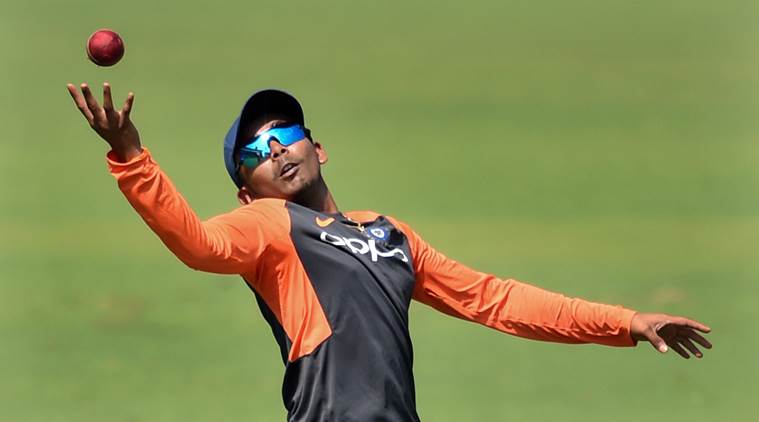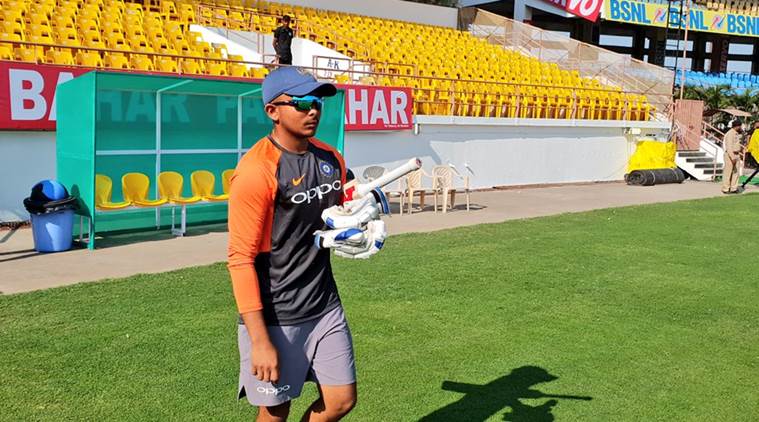Stay updated with the latest sports news across Cricket, Football, Chess, and more. Catch all the action with real-time live cricket score updates and in-depth coverage of ongoing matches.
T20 era can tempt a cricketer to push the envelope
The advent of T20 cricket has heralded the onset of brutal power in cricket. Spectators are demanding a sixer, a boundary or a wicket every other ball.
 Prithvi Shaw has been handed an eight-month suspension for failing a dope test. (File Photo)
Prithvi Shaw has been handed an eight-month suspension for failing a dope test. (File Photo)
The recent doping cases involving three cricketers establishes the fact that the menace of doping is as much prevalent in the Gentleman’s Game as in other sports. It is disturbing to note that the players caught are young, but they can’t be called naive. They are seasoned professionals. Prithvi Shaw is a Test cricketer while Divya Gajraj and Akshay Dullarwar have played first-class cricket.
The advent of T20 cricket has heralded the onset of brutal power in cricket. Spectators are demanding a sixer, a boundary or a wicket every other ball. Players who cannot enhance their performance to meet these demands have to make way for others. In order to survive, the players look for explosive power to bowl quick and hit the ball harder.
Read | BCCI gets a dose from Govt: You don’t have authority to test players for drugs
It is this search for performance-enhancement that might tempt the modern-day cricketer to push the envelope. Doping offers an assorted menu for cricketers. Anabolic steroids are the drug of choice for fast bowlers and batsmen who want explosive power. Stimulants can be useful to a batsman, fielder or wicketkeeper to delay the onset of fatigue or increase concentration.
 Prithvi Shaw recently failed a dope test conducted by BCCI. (Source: BCCI/Twitter)
Prithvi Shaw recently failed a dope test conducted by BCCI. (Source: BCCI/Twitter)
A factor common in all three players caught in the doping net is that they had ingested banned drugs categorised as “specified substances” in BCCI anti-doping rules, which are derived from the WADA Code. Among the WADA provisions is a clause that if a player can prove that the ingestion of the banned drug was unintentional, he can get away with minor penalties that range anywhere between 0-2 years.
Also Read | Prithvi Shaw: Out in the cold for having cough syrup
It seems that the three players prepared their defence admirably. For starters, they pleading guilty. They also waived their right to ask for the testing of their reserve sample. All this played a role in them getting lighter sanctions.
All three players pleaded that they had inadvertently taken the banned drugs. Shaw said he went to a chemist’s shop to purchase a cough syrup and the pharmacist gave him a syrup that had Terbutaline, a Beta2 agonist on the banned list. According to Dullarwar, he visited a doctor who prescribed the banned corticosteroid tablets for his skin infection. Gajraj had a more authentic explanation to offer. He was prescribed a banned diuretic, acetazolamide by an eye specialist to get rid of the swelling in his injured eye.
 Prithvi Shaw has been banned for eight months, backdated from March 16 this year. (File Photo)
Prithvi Shaw has been banned for eight months, backdated from March 16 this year. (File Photo)
Going by their accounts, the players get full marks for their defence. Rather than going into denial mode, they accepted the blame for taking the banned drugs. To strengthen their defence, they also submitted that they did not have enough exposure to the anti-doping awareness programme. They were also smart to argue that the pharmacist as well as the doctors who gave them the prohibited drugs had no knowledge about doping in sports, which is true in the case of most medical practitioners.
The independent review board to whom the cases were referred by BCCI showed restraint and compassion in dealing with the three cases. They relied on the dictum that “what counts in this context is what the cricketer actually knew, not what he should have known”.
Also Read | Suspension is a huge setback, but he will come out of it: Prithvi Shaw’s childhood coach
BCCI received the three results from the National Dope Testing Laboratory on July 16 and on July 30, issued the sanction orders. This is in sharp contrast to NADA decisions that often takes months or even years to result in an order. Unlike some other anti-doping agencies across the world, BCCI did not show any unwarranted ‘obsession to punish’ the drug offenders, rightly so especially when it was well known that none of the drugs which these players have taken have any performance-enhancing utility for cricket.
These cases involving the three cricketers are a lesson for dope offenders in the future to prepare their defence well in terms of when to plead guilty, how to argue on unintentional doping, and on the art of proving how the drug got into the body. All these are factors that can mitigate the doping offence and make offenders eligible to get away with lighter sanctions, as has happened in these cases.
Nevertheless, the BCCI order sanctioning Shaw leaves behind a big lacuna. His ineligibility period of eight months starting from March 16 to November 15 covers the period when he played IPL matches. According to the order, the player is ineligible to compete and receive monetary benefits during that period. Interestingly, Shaw had played 16 IPL matches for Delhi Capitals during the period between March 23 and May 12. He had even received the ‘Man of the Match’ award in addition to the retainer fee paid by the franchise. Shaw stands to forfeit all this money now.
Also, BCCI needs to review its present anti-doping educational programme that is claimed to be very broad-based and effective. All cricketers who are caught for a doping offence have claimed that they did not have adequate knowledge of anti-doping rules and regulations of BCCI. That is some ‘food for thought’ for BCCI!
Dr PSM Chandran is the President, Indian Federation of Sports Medicine & Former Director (Sports Sciences), Sports Authority of India.
































